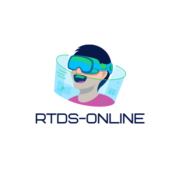There’s a whole new world out there, waiting to be explored. No, it’s not on the other side of the globe, it’s right here, just a headset away. Welcome to the immersive universe of Virtual Reality (VR). From breathtaking roller coaster rides to epic space adventures, VR experiences are redefining entertainment, making the impossible possible.
How do you navigate this vast VR landscape? Fear not, we’re here to guide you. Whether you’re a seasoned gamer or a curious newbie, this article will shed light on the top VR experiences that are sure to blow your mind.
Top VR Experiences
Excellent VR Games and Simulations
 In the realm of VR gaming and simulations, multiple releases stand out. A noted pick is “Star Atlas”, an adventure game that transcends the gamer into a captivating universe of celestial bodies. With a profound story-line and breathtaking graphics, it emerges as a must-try for gaming enthusiasts.
In the realm of VR gaming and simulations, multiple releases stand out. A noted pick is “Star Atlas”, an adventure game that transcends the gamer into a captivating universe of celestial bodies. With a profound story-line and breathtaking graphics, it emerges as a must-try for gaming enthusiasts.
On the simulation side, “Job Simulator” persists as a fan favorite. The quirky nuances, coupled with the sheer ridiculousness of it all, serve to deliver a whimsical experience that’s simply not to be missed.
Immersive Educational VR Applications
Education isn’t left behind in the VR bloom; quite the contrary. Several immersive educational VR applications exist that completely transform the perception of learning. For example, “Google Expeditions” lets individuals embark on virtual trips, exploring everything from historical landmarks to outer space. It’s a potent tool that can effectively supplement traditional classroom education.
Next on the roster, “Titans of Space” offers a jaw-dropping tour of the cosmos, where learners get to traverse the universe and glean insights into celestial bodies, proper, in real-time.
Lastly, “Unimersiv” stands as an unforgettable experience, wherein users can walk through ancient Rome, dive into the depths of the ocean, or even explore the human anatomy inside out. The level of immersion affords unparalleled learning experiences that traditional methodologies simply can’t match.
Technological Advances in VR
Innovations in VR Hardware
 Recent years have seen remarkable strides in VR hardware. One notable innovation is the rise of standalone VR headsets. These devices, unlike their tethered counterparts, provide wireless freedom, amplifying the overall immersive experience. Oculus Quest 2, for instance, offers 6 degrees of freedom allowing users to move freely in virtual space, not bound by cables.
Recent years have seen remarkable strides in VR hardware. One notable innovation is the rise of standalone VR headsets. These devices, unlike their tethered counterparts, provide wireless freedom, amplifying the overall immersive experience. Oculus Quest 2, for instance, offers 6 degrees of freedom allowing users to move freely in virtual space, not bound by cables.
Further, the incorporation of hand tracking technology has dramatically improved user interaction in VR environments. Leap Motion’s hand tracking device exemplifies this, mapping users’ real-time hand movements into the VR context for more natural, intuitive interactions.
Breakthroughs in VR Software
On the software front, VR has made significant progress as well. Dynamic Rendering, as implemented by major players like HTC and Oculus, adjusts VR images’ resolution based on the user’s gaze, thus enhancing visual quality while optimizing system resources.
Equally significant has been the rise of social VR platforms such as VRChat and Rec Room. These platforms allow users from across the globe to interact in virtual spaces, transforming the VR experience into a more social one.
Finally, the development and adoption of industry-wide software standards, like Khronos group’s OpenXR, increasingly enables developers to create content that’s compatible across various VR devices, thus eliminating the barriers once posed by platform-specific software.
Navigating Virtual Realities: A User’s Guide
Choosing the Right VR Headset
 In 2023, an assortment of VR headsets flooded the market, each boasting unique features and capabilities. For avid players desiring to explore cosmic odysseys like ‘Star Atlas,’ standalone VR headsets provide a matchless experience by blending cutting-edge hardware and software innovations. Oculus Quest 2 and HTC Vive Pro present prominent examples, providing built-in tracking capabilities, eliminating reliance on PC or console. Novices, preferring to dabble in virtual worlds via ‘Job Simulator,’ might favor simpler, PC-dependent VR headsets.
In 2023, an assortment of VR headsets flooded the market, each boasting unique features and capabilities. For avid players desiring to explore cosmic odysseys like ‘Star Atlas,’ standalone VR headsets provide a matchless experience by blending cutting-edge hardware and software innovations. Oculus Quest 2 and HTC Vive Pro present prominent examples, providing built-in tracking capabilities, eliminating reliance on PC or console. Novices, preferring to dabble in virtual worlds via ‘Job Simulator,’ might favor simpler, PC-dependent VR headsets.
Setting up Your VR Environment
Setting up a VR environment hinges on selecting an appropriate space and calibrating the system to precisely capture movements. Large clear areas facilitate movement for action-intensive virtual experiences. A lounge or a sizeable spare room devoid of furniture or hindrances offers a good start. For stationary experiences, such as exploring virtual tours via ‘Google Expeditions,’ a smaller space serves the purpose just fine. Post-space selection, calibration commences.

